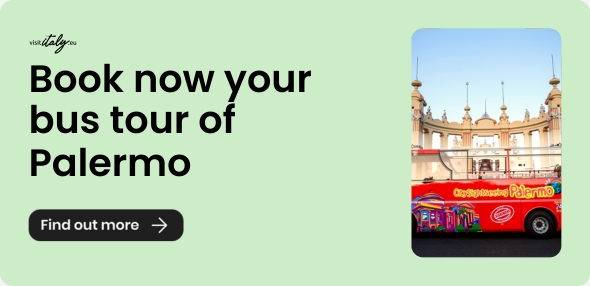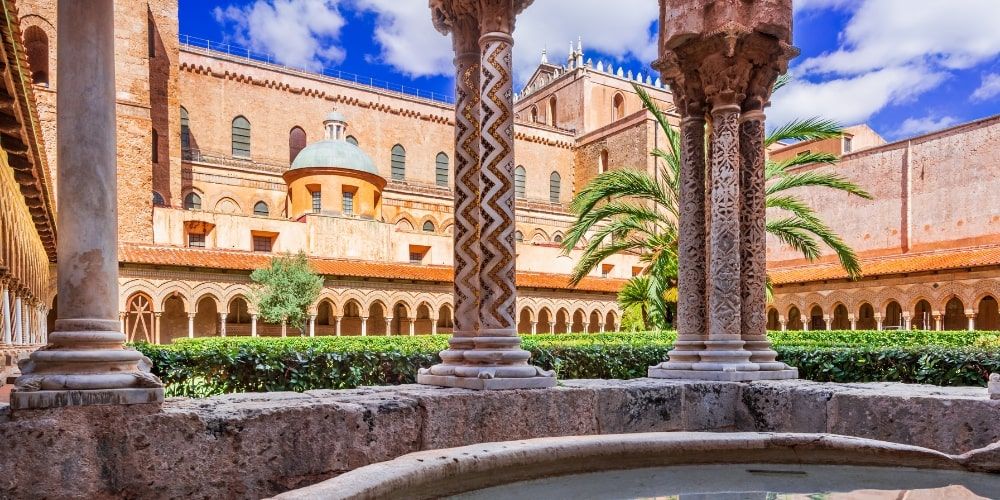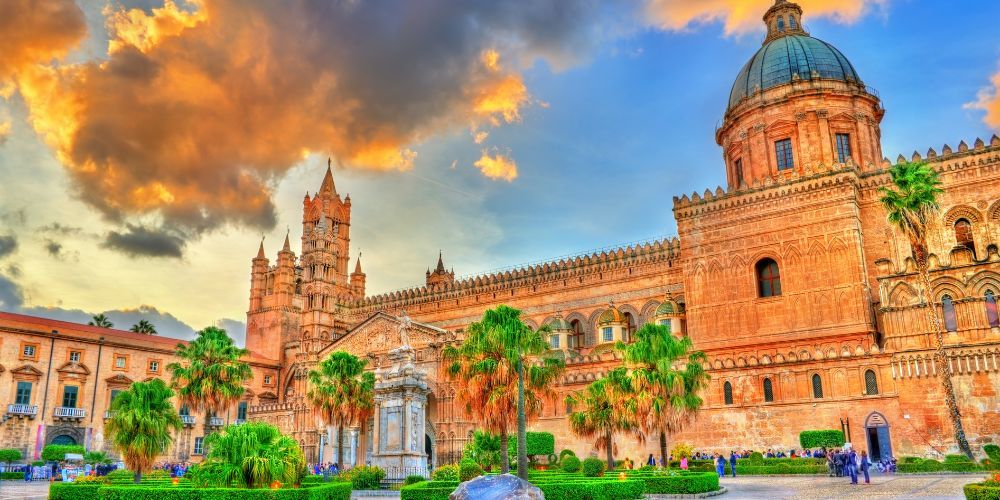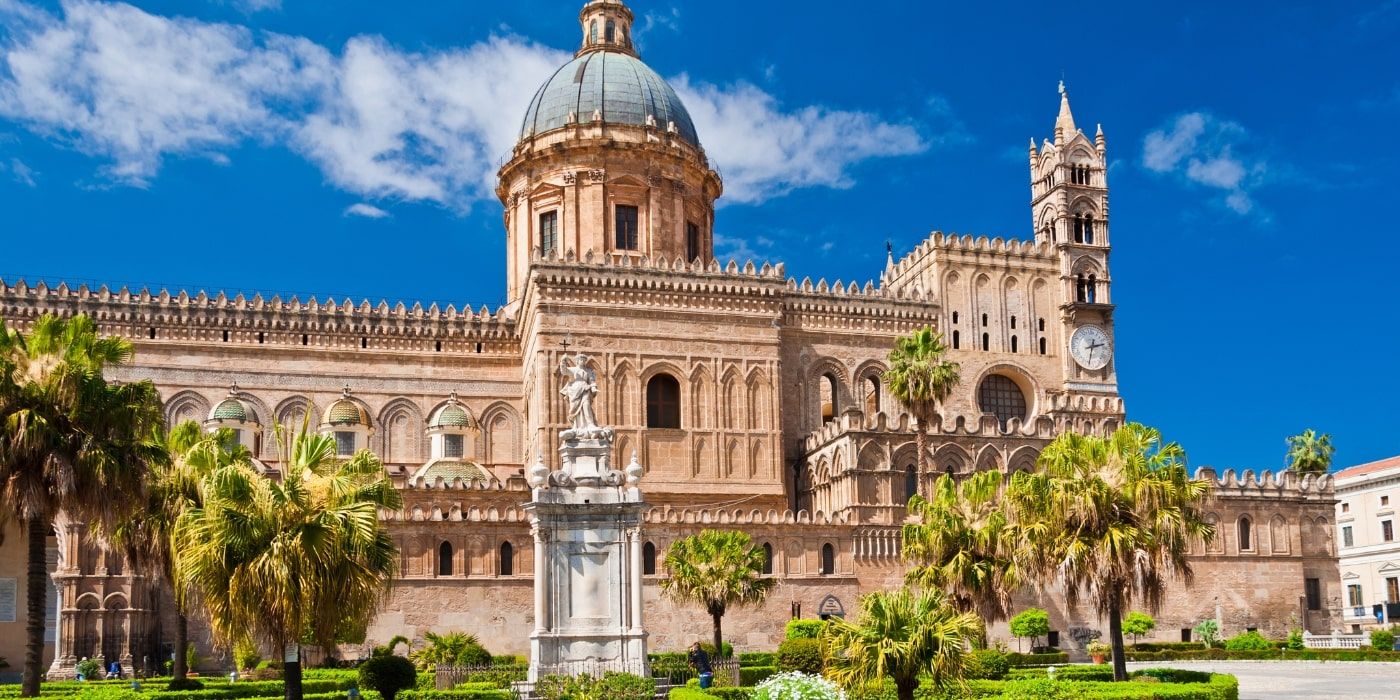Palermo is a city rich in history, art and culture, offering visitors a unique and unforgettable experience. Its beauty lies in the variety and fusion of architectural styles, evidence of the different dominations that have marked its past. So what to see in Palermo in a three-days weekend?
In this guide we offer an itinerary to discover the most beautiful and interesting places in Palermo, for a dream Sicilian weekend.

An itinerary for a weekend in Palermo

A weekend in Palermo must be carefully planned. Palermo is a multifaceted city and in just 3 days, if you don't plan carefully, you risk missing some of them.
Like the region of which it is the capital, Palermo has its roots in Greek, Arab, and then Norman, Byzantine and who knows how many other cultures. Many are the influences you will encounter here.
That's why, before you start with our itinerary ti 3 days we suggest you take a look at all the possibilities this city can offer you. We talked about that here.
Day one: the historic center

The first day is dedicated to visiting the historic center of Palermo, where some of the city's most important and striking monuments are concentrated. We start from the Norman Palace, the former residence of the Norman kings and now the seat of the Sicilian Regional Assembly. Here you can admire the splendid Palatine Chapel, a masterpiece of Arab-Norman art, decorated with golden mosaics and wood inlays. The palace is included in the heritage protected by Unesco.
Continuing along Corso Vittorio Emanuele, Palermo's main and oldest street, we come to the Cathedral, also a Unesco heritage site. The Cathedral is an imposing and harmonious building, which contains within it elements of different eras and styles, from early Christian to neoclassical. Among the things to see are the royal tombs, including that of Frederick II, and the tomb of Santa Rosalia, the city's patron saint.
From the Cathedral you can walk to Quattro Canti, the intersection of Corso Vittorio Emanuele and Via Maqueda, where there are four Baroque facades adorned with statues and fountains. The Quattro Canti is considered the center of the city and from here one can access the four historic districts: the Kalsa, Albergheria, Vucciria, and the Capo.
Near the Quattro Canti is the Teatro Massimo Vittorio Emanuele, the largest opera house in Italy and one of the largest in Europe. The theater is famous for its perfect acoustics and for being the site of the last scenes of the film The Godfather - Part III. You can visit the inside of the theater with a guide or attend a performance.
To end the day, you can take a walk in the Foro Italico, Palermo's seafront promenade, where you can enjoy the view of the sea and the sunset. This is also home to the Pretoria Fountain, a 16th-century monumental fountain decorated with allegorical statues and fantastic animals.
Not sure where to stay in Palermo? Read our recommendations here.
Discover Palermo's culinary traditionsWhat to see on our second day in Palermo: museums and churches

The second day of this Palermo itinerary could be devoted to discovering the city's museums and churches, which tell the history and culture of Sicily through works of art and archaeological evidence. We begin with the Regional Archaeological Museum, which houses a rich collection of artifacts from Sicily and the smaller islands, from the prehistoric period to late antiquity.
A short walk from the museum is the Martorana Church, one of the most beautiful Byzantine churches in Italy, founded in 1143 by Admiral George of Antioch in the service of King Roger II. The Martorana Church is famous for its Byzantine mosaics, which depict biblical scenes and saints, including Christ Pantocrator and the Madonna Odigitria. The church is also known for its red dome, which dominates the panorama of Piazza Bellini.
After visiting the Martorana church, you can continue to the Palazzo Abatellis, home of the Sicilian Regional Picture Gallery. The palace is an example of Gothic-Catalan architecture, restored in 1954 by architect Carlo Scarpa. The picture gallery houses a collection of Sicilian artworks from the Middle Ages to the 18th century.
For lunch, you can opt for one of the many typical trattorias in the historic center, where you can enjoy the specialties of Palermo's cuisine, such as panelle, crocchè, arancine, caponata, pasta with sardines, and sweets made with almond paste and pistachio. You can also try the local street food.
In the afternoon we resume the tour with a visit to the Botanical Garden and Villa Giulia, two green oases in the heart of the city. The Botanical Garden is one of the oldest and most important in Italy, founded in 1789 as a teaching garden for the study of plants. Here you can admire more than 12,000 plant species from around the world, including palms, cacti, orchids and tropical plants. Villa Giulia, on the other hand, is a neoclassical-style public garden adorned with statues, fountains and vases. Also located here is the Giuseppe Pitrè Sicilian Ethnographic Museum, which collects objects and evidence of Sicilian folk culture.
For dinner, you can choose from the many restaurants in the historic center, where you can enjoy fresh fish or barbecued meat, accompanied by a good local wine.
Day three: let's go for a trip out of town!

We decided to dedicate the third day of this guide on what to see in Palermo to excursions outside the city, to discover Palermo's surroundings and places of natural and cultural interest. Possible destinations include:
Monreale: a town about 10 km from Palermo, famous for its Cathedral, one of the masterpieces of Arab-Norman art.
Cefalù: a town about 70 km from Palermo, known for its cathedral, also a UNESCO World Heritage Site. Cefalù is also a popular seaside resort, with a long beach of golden sand and a picturesque historic center.
Erice: a medieval village set on a hill 750 meters above sea level that offers breathtaking views of the Gulf of Trapani and the Egadi Islands. The village is characterized by cobblestone streets, Romanesque and Gothic churches, castles, and towers. Among the main attractions are the Castle of Venus and the Pepoli Castle.
Segesta: an archaeological site about 80 km from Palermo, where the remains of a city founded by the Elymians, a people of uncertain origin, can be seen. The site is dominated by the Doric Temple, one of the best-preserved Greek temples in the world, dating from the 5th century BC and never completed. A short distance away is the Greek Theater, carved into the rock and with a splendid view of the surrounding landscape.
Salt pans and wineries in Marsala: A food and wine trip about 120 km from Palermo to discover the charms of the Trapani and Paceco salt pans, a nature reserve where sea salt is produced according to traditional methods. In Marsala, on the other hand, one can visit one of the historic wineries where the world-famous fortified wine of the same name is produced. You can take a guided tasting and buy typical products.
About the author
Written on 16/05/2023



Marco Brunasso
A city worth visiting at least once in a lifetime. Here's what to do on a weekend in Palermo.